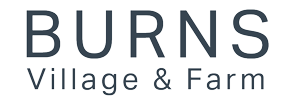FAQs
What is Burns Village & Farm?
It is a cohousing and small farm community being planned near Nashville, TN. A core group of individuals committed to developing a community with a farm has identified a suitable site, and we have signed a contract on property in Dickson County. The core group is planning the development of 36 clustered homes with a two-acre sustainable farm, conservation areas, and a multi-use clubhouse (also called a common house) for social activities and shared meals.
What is the membership process, and are fees or financial commitments required to join?
Become an Explorer. This is the first step for those who are drawn to learn more about this exciting project and decide if you want to join Burns Village & Farm as a Member household.
Explorers are offered opportunities to socialize with other Explorers and Members. They receive detailed information about the building and construction plans, decision-making and governance processes, and legal and financial agreements. The Explorer journey is completed between 30-90 days, with the goals of answering all Explorer questions. Your journey starts with payment of a $150 Explorer fee.
What types of housing are available?
Currently, we are planning 2 types of 2 bedroom, stacked flats and 2 styles of townhomes, 2 and 3 bedrooms. All units are attached with 1 shared wall. View the 4 proposed floor plans.
What are the prices of homes?
Currently, the prices range from $360k - $700k.
Where is this community?
We will be living about 30 minutes west of Nashville in Burns, Tennessee.
What is the timeline for completion?
Currently, pre-development and infrastructure planning will begin by late 2025 with construction starting in 2026. We anticipate beginning moving into homes in late 2026.
How does the community make decisions, and what is the governance model?
We make decisions based on a modified consensus model. All voices are heard and no decisions are made unless there are no objections. We employ collaborative governance where there are no elected leaders. Watch Consensus 101: Basic Training in Consensus on YouTube.
